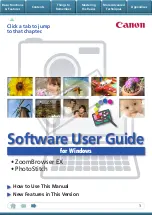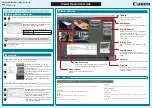
38
User Interface
Section 3-3
Note
(1) Symbols can be added or deleted and functions that use a symbol can be
searched for in the symbol table.
(2) Symbols (communications addresses) to be set can be copied from the
symbol table to the Property List using the drag-and-drop function.
(3) Symbols can also be copied from the CX-Programmer's symbol table and
pasted to the CX-Designer's symbol table. This enables the same symbol
to be used by both the CX-Designer and CX-Programmer.
Library Window
A library object is a group of registered functional and fixed objects together
with their property settings registered as one unit of data.
Objects can be registered as a library object and easily reused in multiple
locations or screens from the Library Window.
The Library Window can be displayed and hidden by selecting
View - Win-
dow - Library.
Object List Window
The Object List Window lists the functional objects located in Screen Creation
Window.
Any object can be selected and the display on the Screen Creation Window
can be restricted to a specified type of functional object from the Select Object
Window.
Selecting and displaying objects by type enables easy editing of objects hid-
den under other objects. Normal screen editing is also possible in this mode.
The Select Object Window can be displayed and hidden by selecting
View -
Window - Object List.
Objects can be easily registered and reused, using the drag-and-drop function.
Register
Reuse
Library Window
Summary of Contents for NS-CXDC1-V3
Page 1: ...USER S MANUAL Cat No V099 E1 04 NS Series CX Designer Ver 3 NS CXDC1 V3...
Page 2: ......
Page 3: ...CX Designer Ver 3 NS CXDC1 V3 User s Manual Revised April 2009...
Page 4: ...iv...
Page 20: ...xx...
Page 32: ...10 Basic Operation Procedures Section 1 2...
Page 62: ...40 User Interface Section 3 3...
Page 106: ...84 Comparison of Functions with NS Designer Appendix A...
Page 112: ...90 Exchanging Data between NS series Products Appendix C...
Page 114: ...92 Revision History...
















































